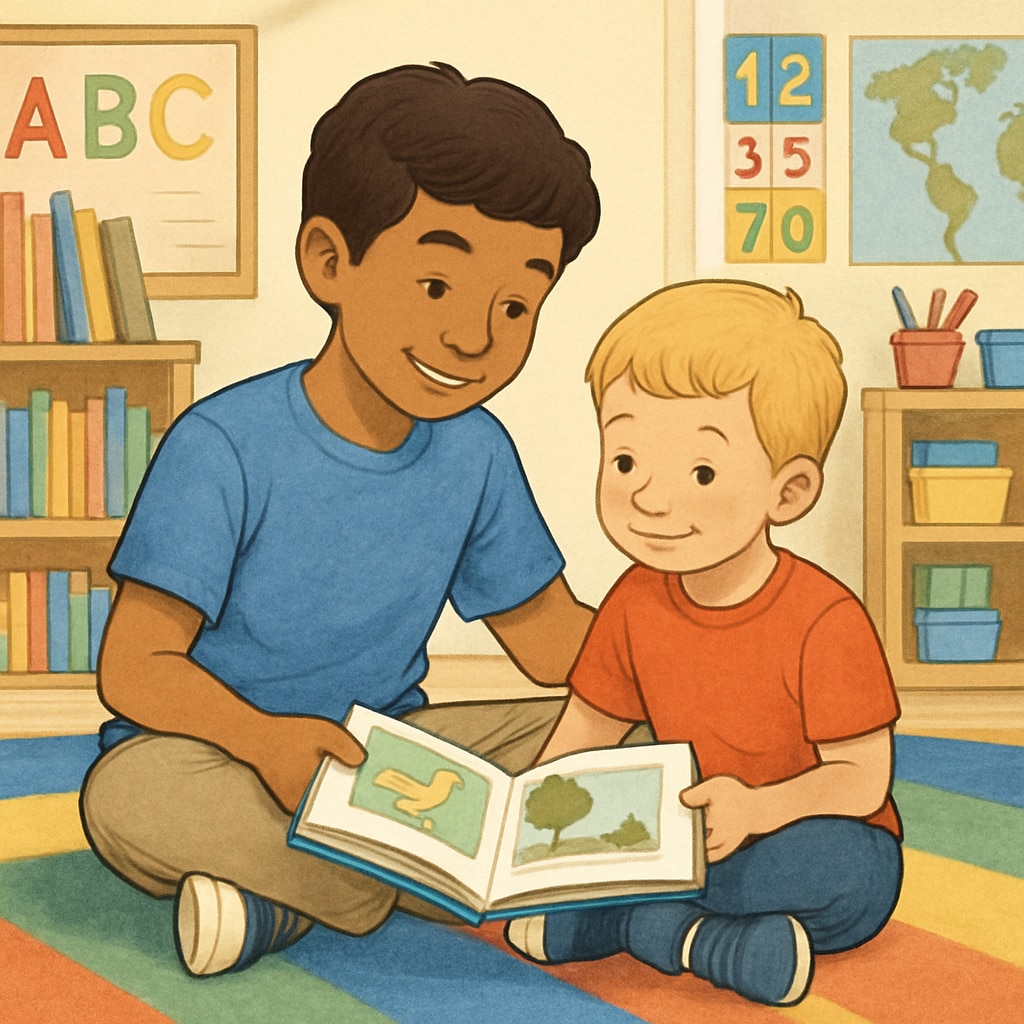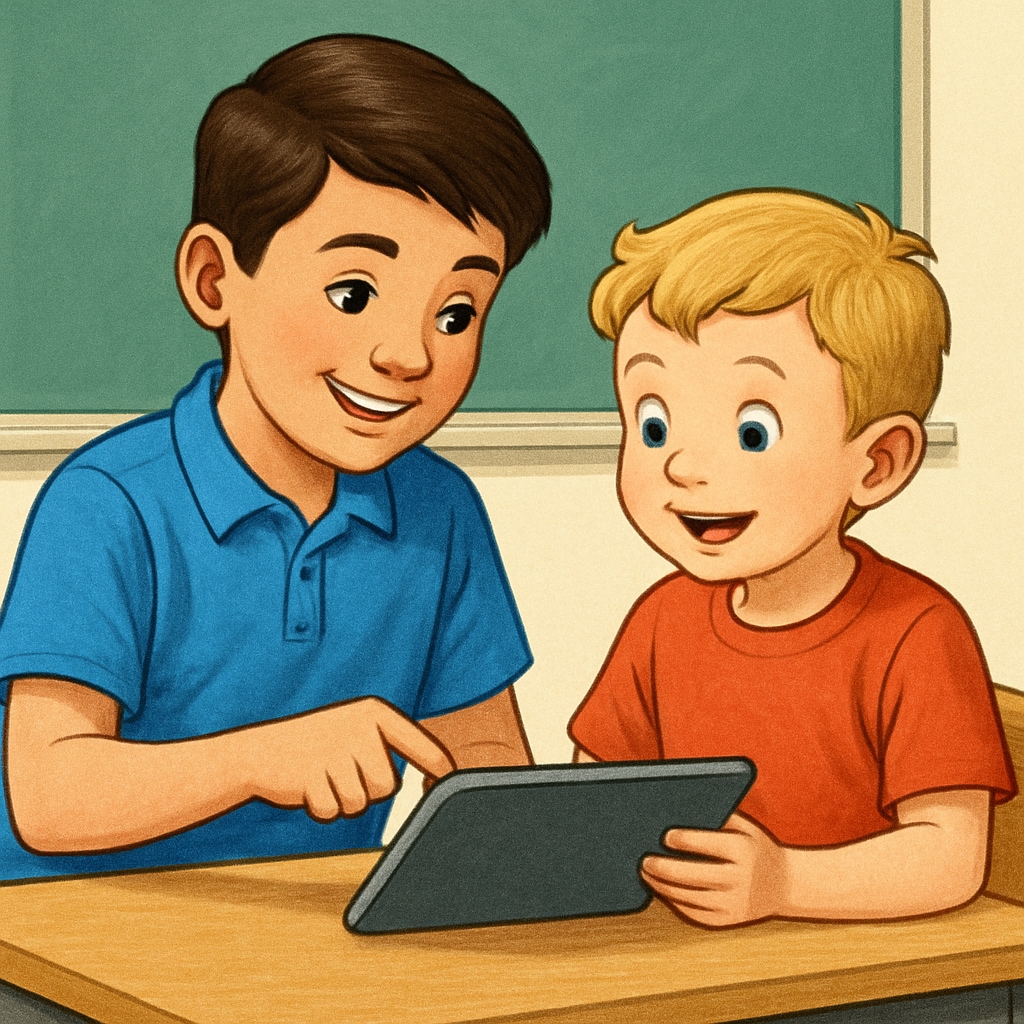Creating meaningful connections between different age groups in schools can be a transformative experience for students. A well-designed kindergarten partner program, involving interactive activities and skill-sharing, can bring kindergarteners and fourth-grade students together in a unique and enriching way. This article outlines a comprehensive plan to foster collaboration through literacy activities, creative projects, and computer skills sharing, ensuring mutual growth and development for both age groups.
Fostering Literacy through Cross-Age Interaction
Reading and writing activities are foundational for young learners, and they also serve as an excellent medium for building connections between kindergarteners and fourth graders. Pairing older students with younger ones for guided reading sessions not only supports the literacy development of kindergarteners but also strengthens the leadership and communication skills of fourth graders.
- Storytime Partners: Fourth graders can read aloud to their younger buddies, engaging them with interactive questions and discussions about the story.
- Creative Writing Collabs: Both age groups can work together to create simple stories. Kindergarteners can illustrate while older students help write the narrative.
- Letter Learning Games: Fourth graders can design fun, hands-on activities like alphabet scavenger hunts to help kindergarteners learn letters and sounds.
By involving both groups in these activities, schools can create a nurturing environment where literacy becomes a shared and enjoyable journey.

Encouraging Creativity with Collaborative Projects
Creative projects allow students to explore their imaginations while building teamwork skills. Cross-age partnerships can produce remarkable results when students are encouraged to collaborate on art, science, or crafting activities.
- Art Projects: Activities like making murals or creating holiday decorations enable students to work together and express themselves artistically.
- STEM Challenges: Fourth graders can guide kindergarteners through simple science experiments or engineering tasks, such as building bridges with blocks.
- Themed Days: Organize themed events like “Space Day” or “Nature Day,” where older students help younger ones with crafts, costumes, and presentations.
These collaborative projects not only stimulate creativity but also nurture a sense of achievement and pride in both groups as they see their ideas come to life.
Building Digital Literacy through Computer Skills Sharing
In today’s tech-driven world, computer skills are invaluable for students of all ages. Fourth graders can play a key role in introducing basic digital literacy to kindergarteners, fostering a sense of confidence and curiosity in technology.
- Basic Navigation: Older students can teach younger ones how to use simple educational apps or navigate age-appropriate websites.
- Digital Art: Collaborate on creating digital drawings or simple animations using kid-friendly software.
- Typing Games: Fourth graders can help kindergarteners practice typing letters and words through interactive online games.
This exchange not only equips kindergarteners with essential skills but also reinforces the fourth graders’ understanding of technology as they take on the role of mentors.

Benefits of a Cross-Age Partner Program
Implementing a cross-age partner program brings numerous benefits beyond the activities themselves. For kindergarteners, these interactions provide a sense of security and inspiration as they look up to their older peers. Meanwhile, fourth graders develop leadership skills, empathy, and a deeper appreciation for responsibility.
Additionally, teachers and staff can observe improved social skills, increased engagement, and a stronger sense of community among students. By creating opportunities for collaboration, schools can bridge the age gap and foster a culture of mutual respect and learning.
Practical Tips for Successful Implementation
To ensure the success of a kindergarten partner program, consider the following tips:
- Plan Ahead: Schedule regular partner sessions and plan activities that align with the curriculum of both age groups.
- Provide Training: Offer guidance to fourth graders on how to effectively mentor and support younger students.
- Monitor Progress: Teachers should observe interactions and provide feedback to ensure a positive experience for all participants.
- Celebrate Achievements: Host events or assemblies to showcase the outcomes of the program and recognize the efforts of both groups.
By following these steps, schools can create a sustainable and impactful program that benefits all participants.
In conclusion, a well-designed interactive partner program can bridge the gap between kindergarteners and fourth graders, creating a supportive and inspiring learning environment. Through literacy activities, creative collaborations, and computer skills sharing, students of different ages can grow together, building skills and memories that will last a lifetime.


